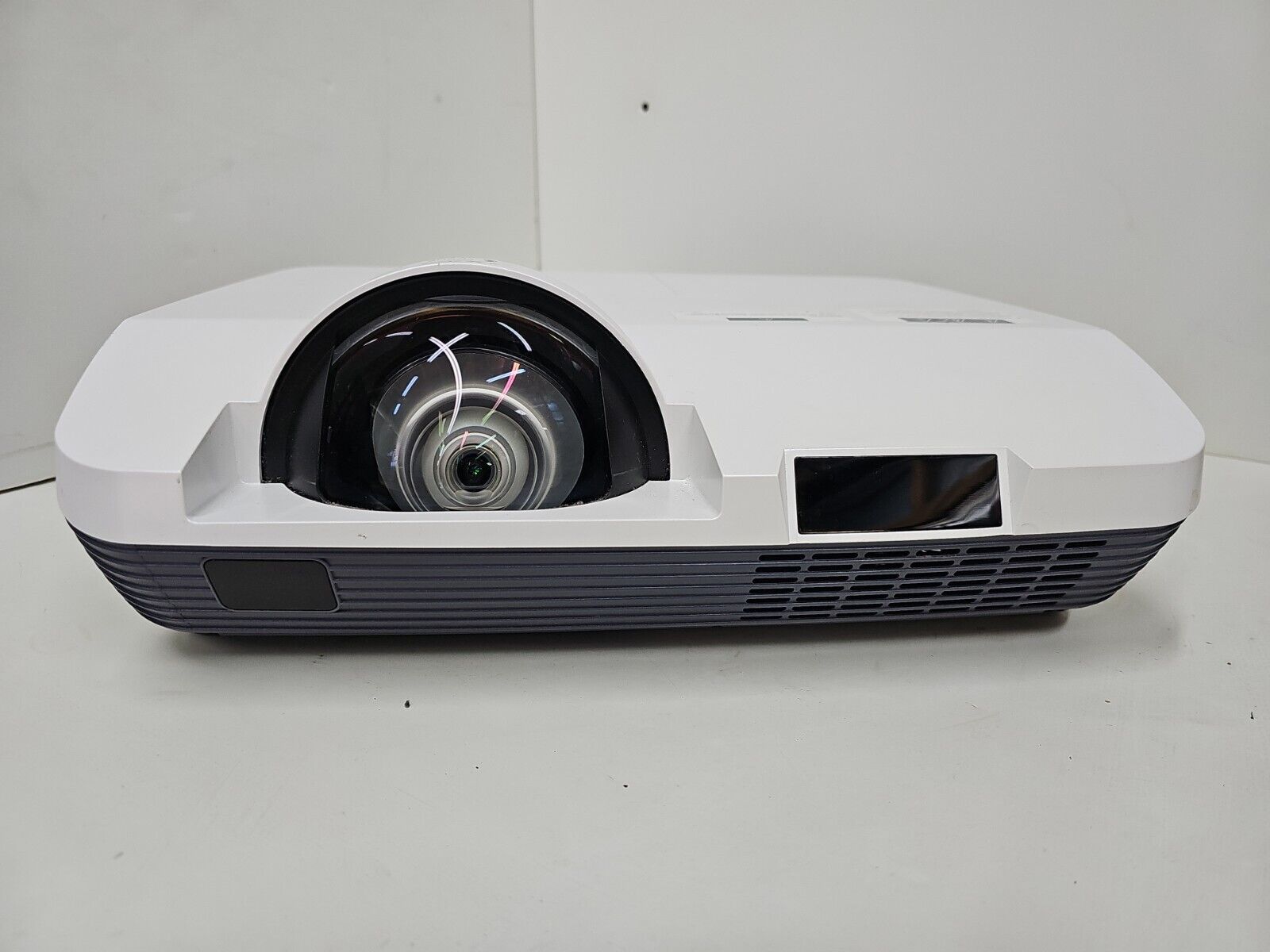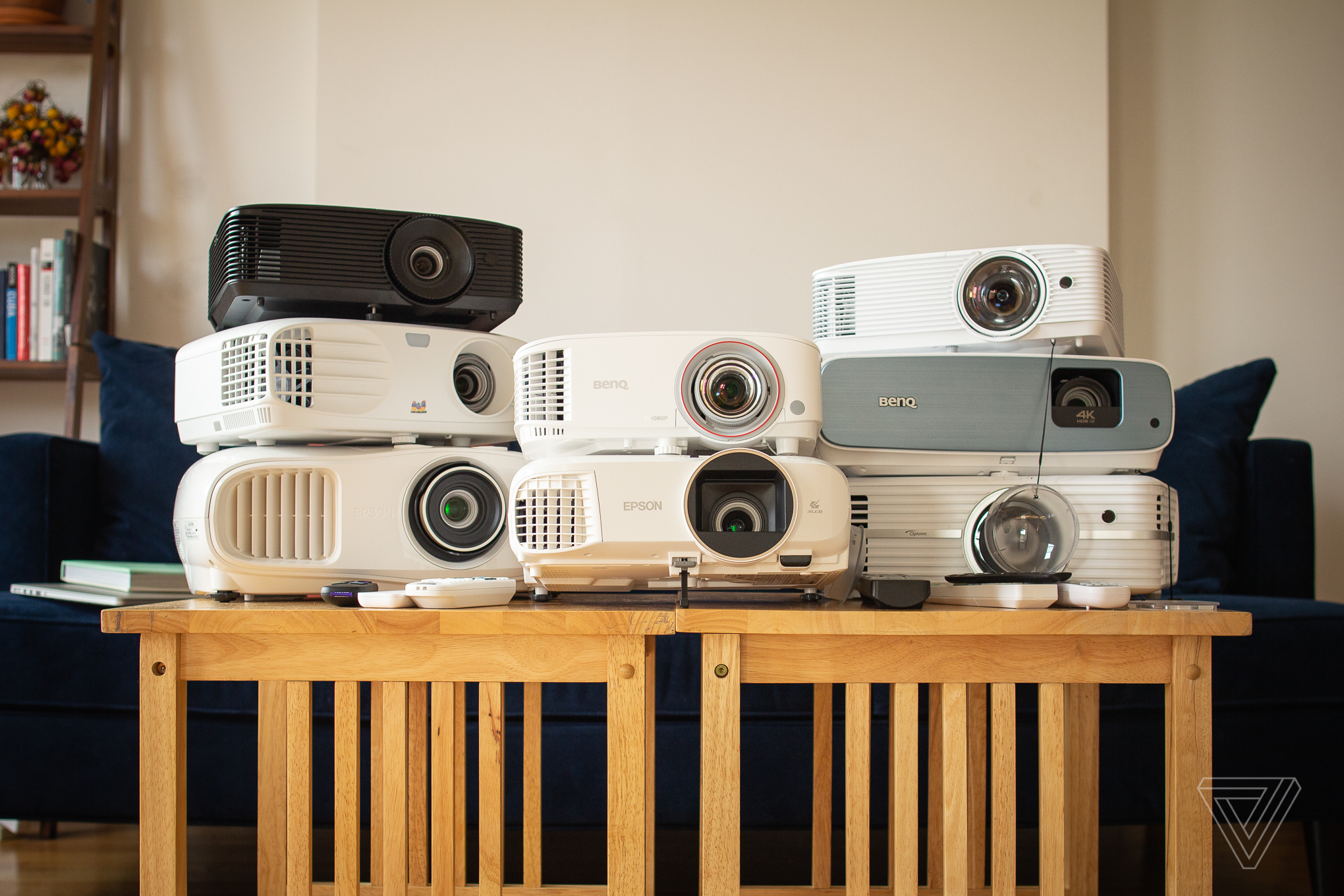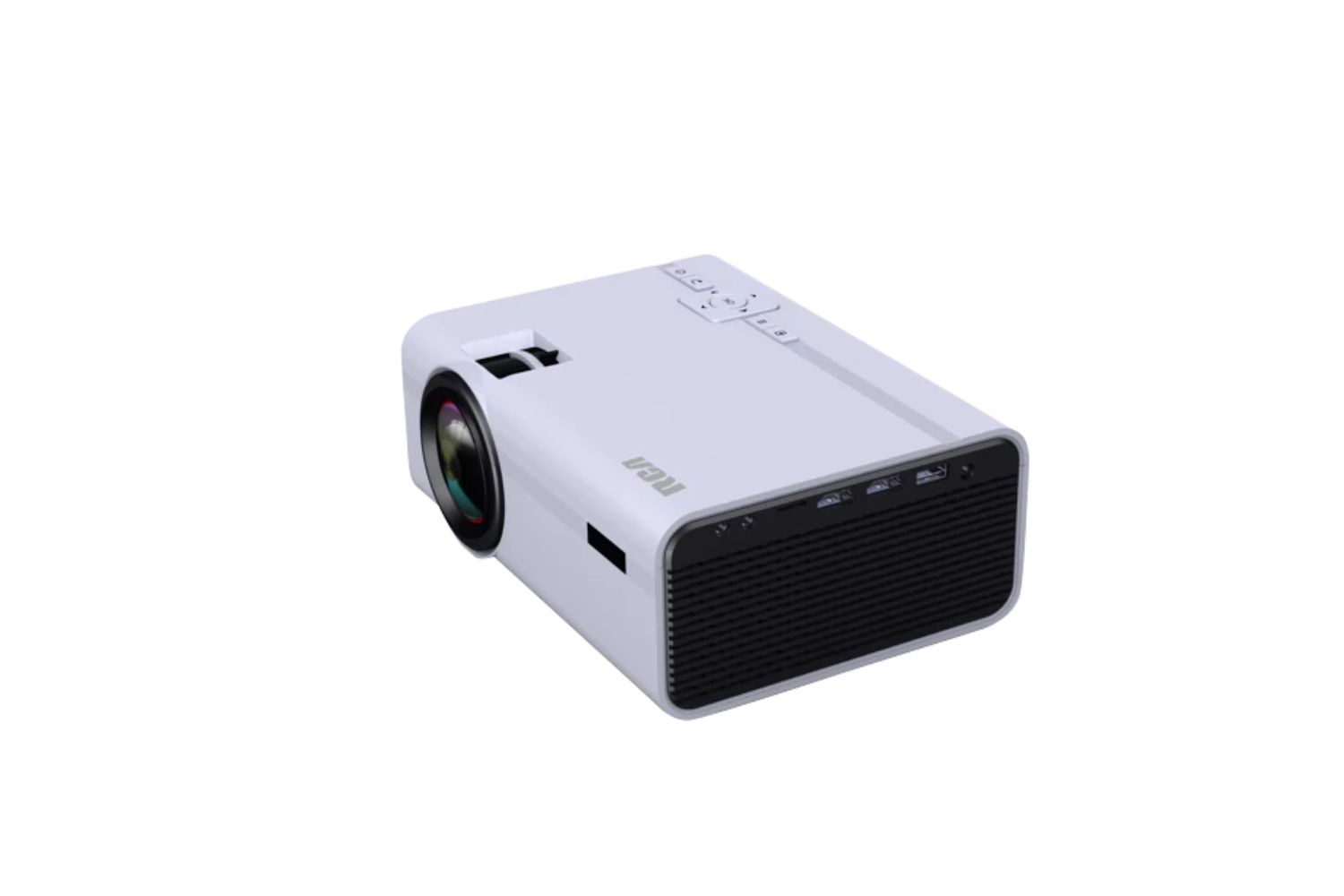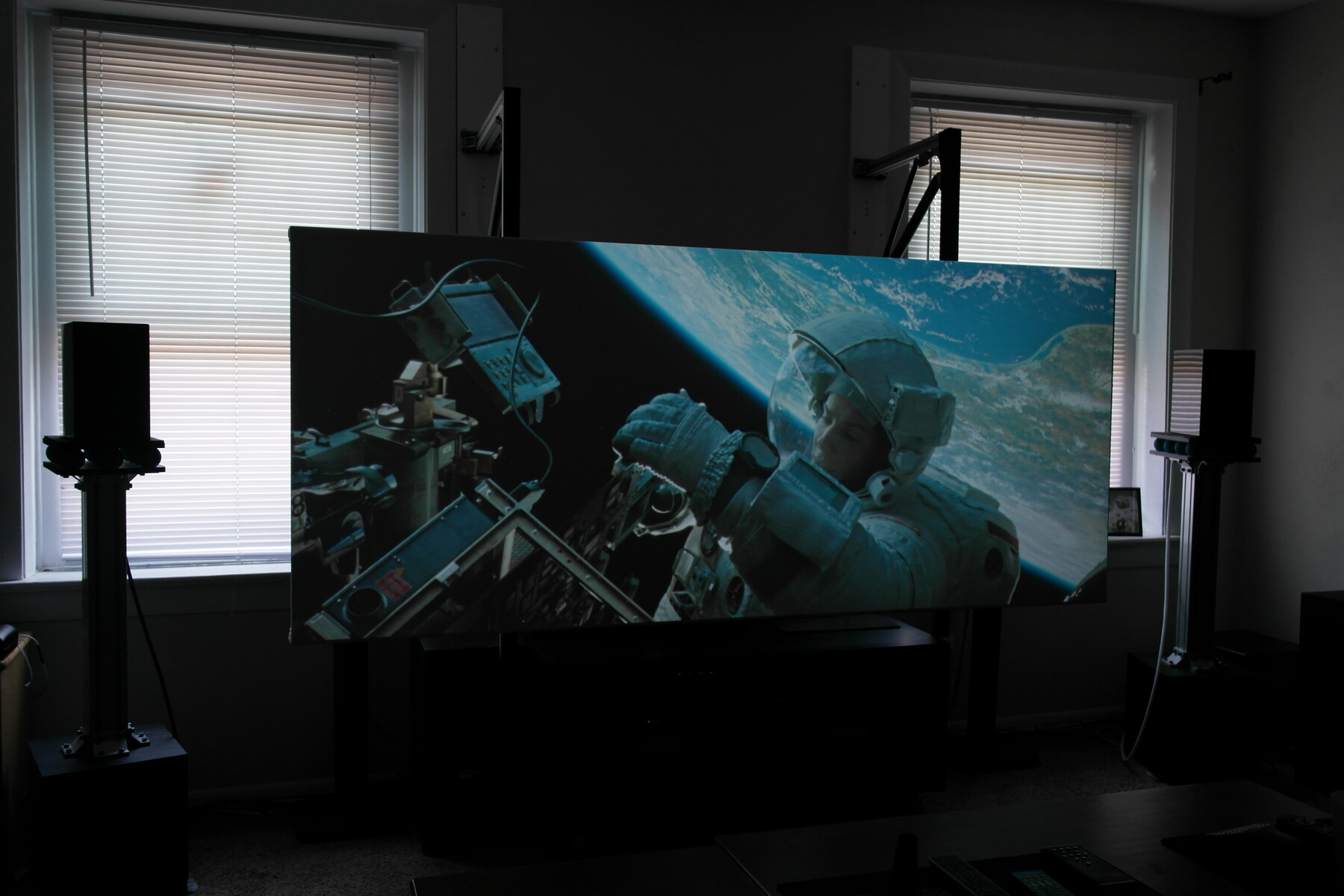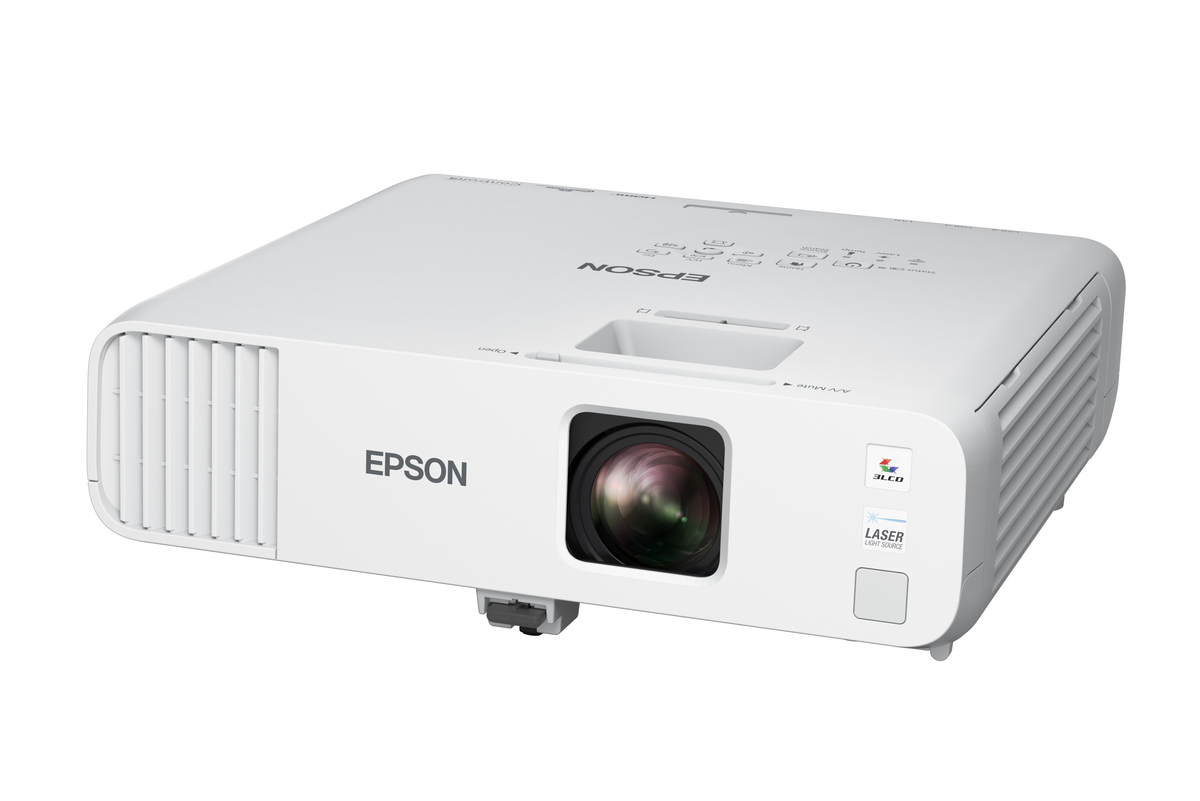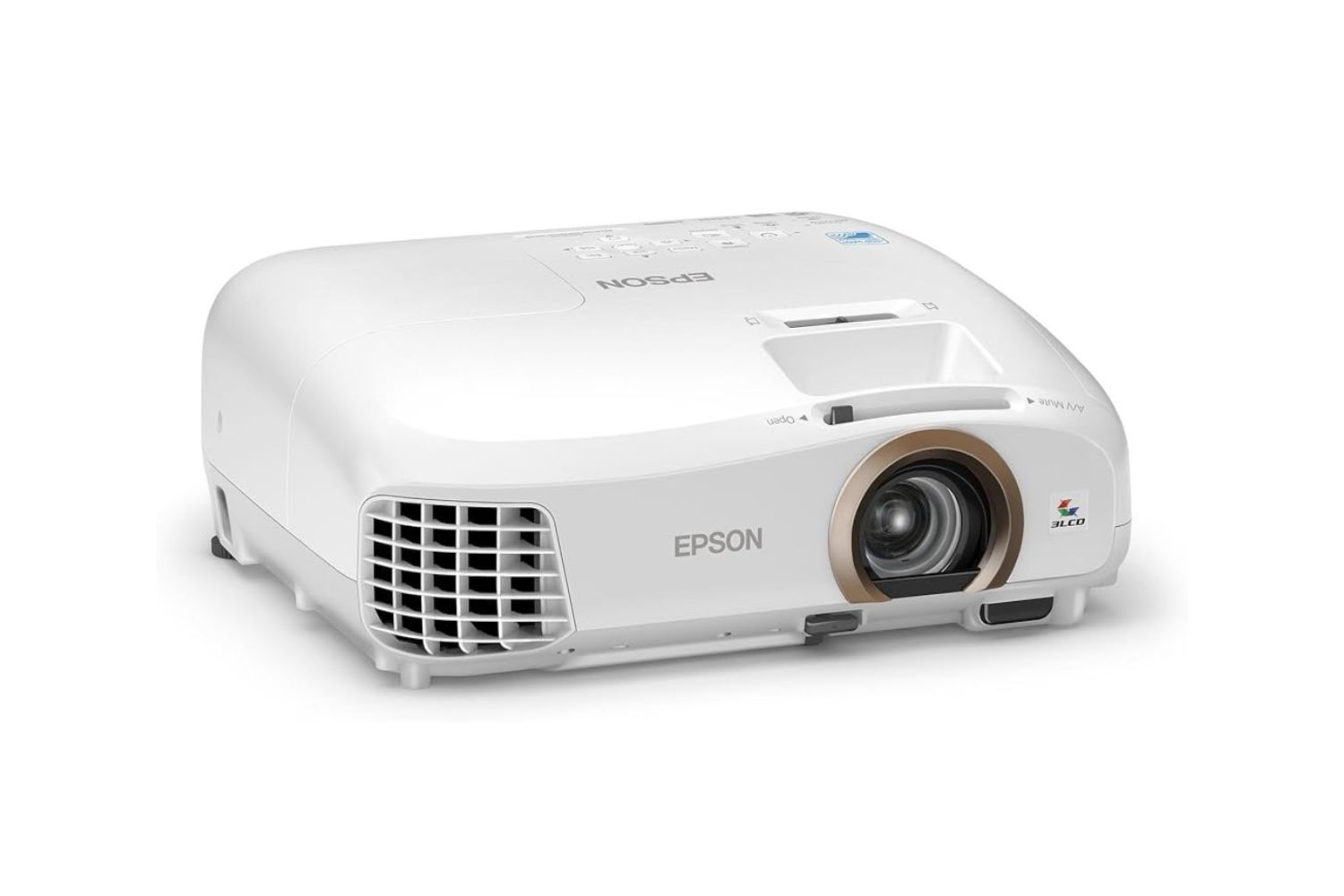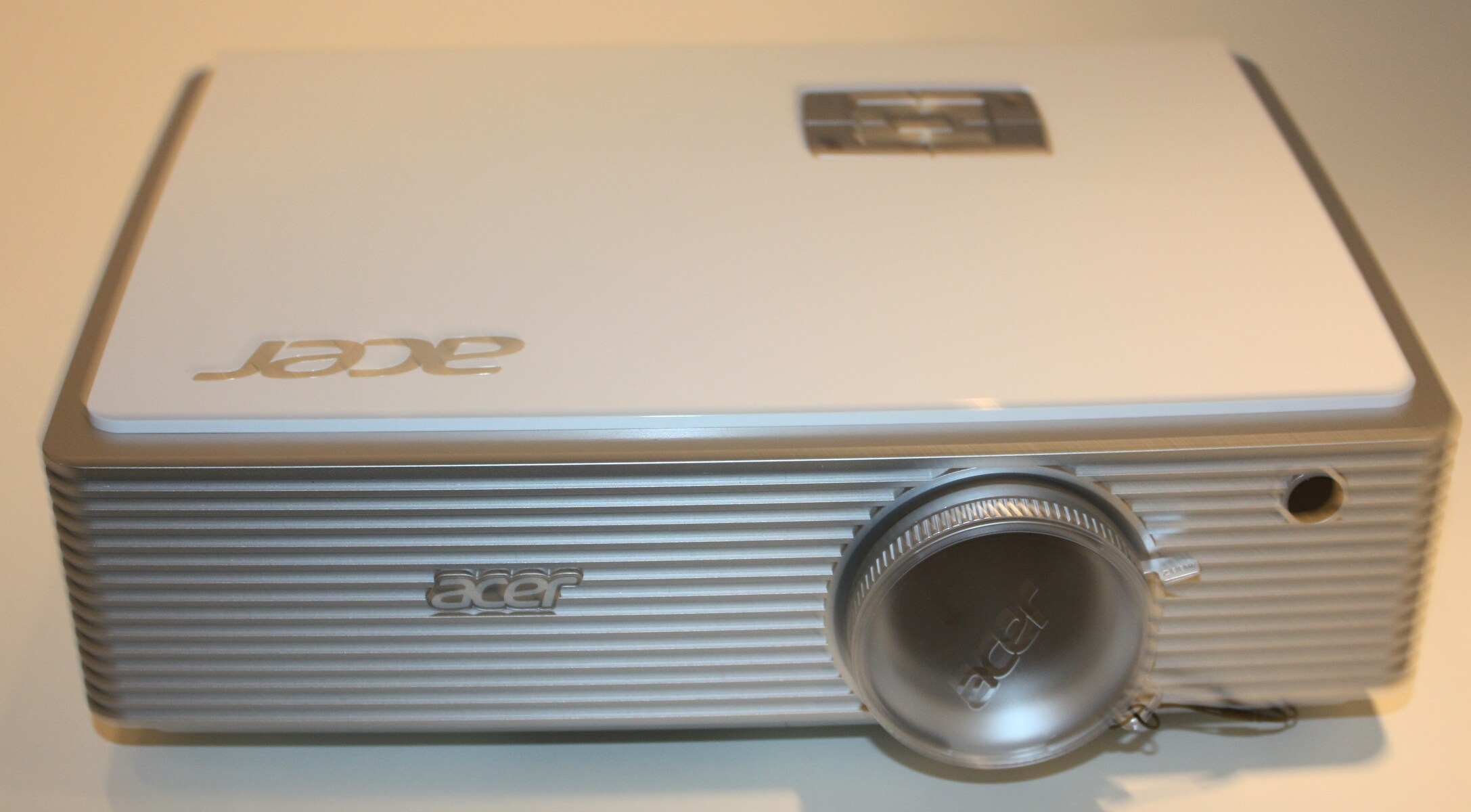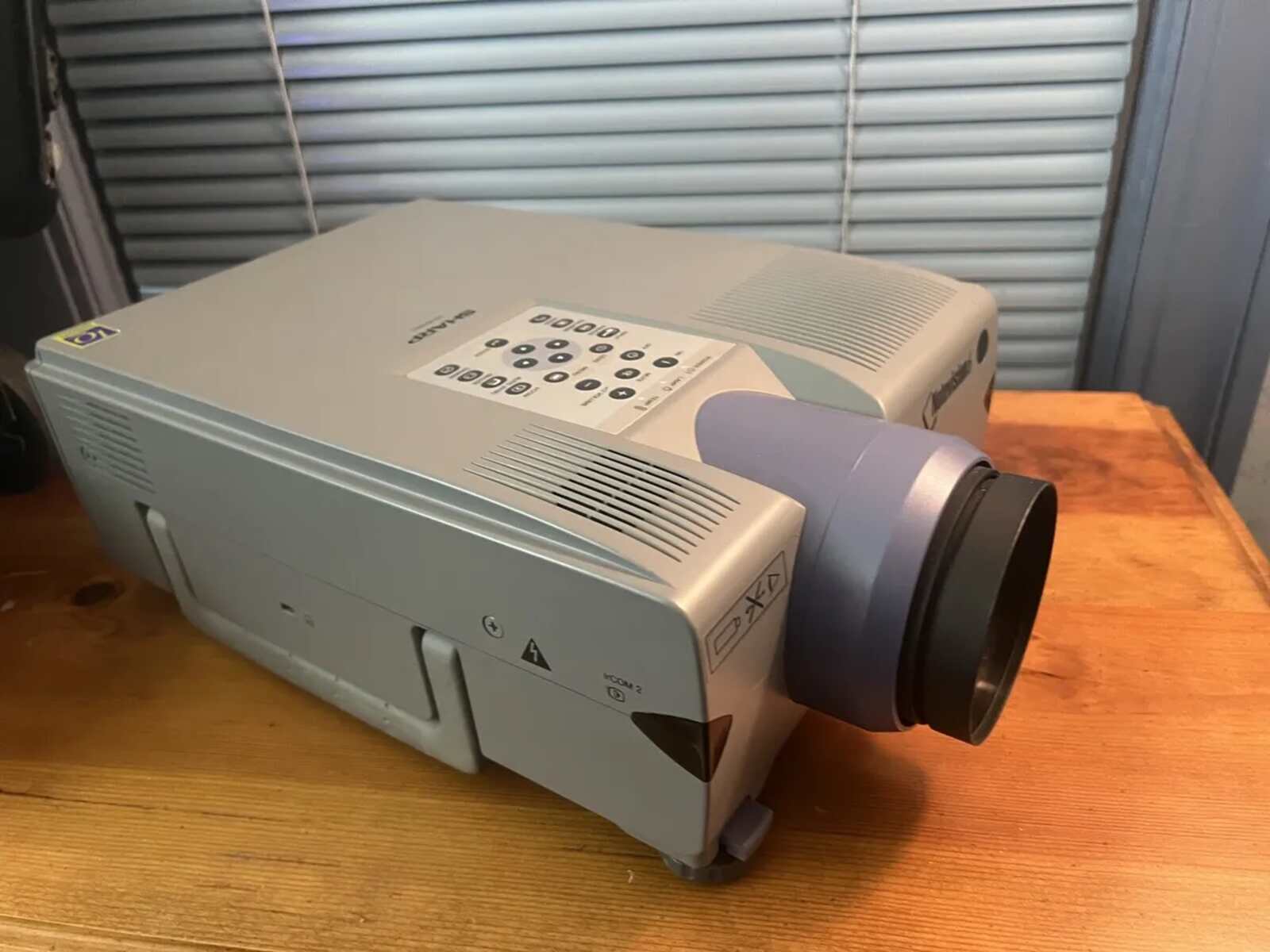What is an LCD projector?
An LCD (Liquid Crystal Display) projector is a popular type of projector that uses liquid crystal panels to display images and videos onto a large screen or surface. It is widely used in classrooms, conference rooms, home theaters, and other settings that require a large display of visual content.
Unlike traditional projectors that rely on a light source and lenses to project an image, an LCD projector works by passing light through three separate LCD panels, each responsible for producing one primary color – red, green, and blue. These colors are then combined to create a full-color image on the projection screen.
The main advantage of LCD projectors is that they can produce vibrant and accurate colors, making them ideal for displaying multimedia content, such as presentations, videos, and photos. Additionally, LCD projectors can be easily adjusted to suit different lighting conditions, allowing for clear and sharp images even in well-lit environments.
Another key feature of LCD projectors is their high resolution capabilities. With advancements in technology, many LCD projectors now offer Full HD (1080p) or even 4K resolution, providing a detailed and immersive viewing experience.
Furthermore, LCD projectors are often lightweight and portable, making them convenient for both professional and personal use. They typically come with various connectivity options, such as HDMI, VGA, and USB, allowing users to connect their devices and display content seamlessly.
Overall, LCD projectors offer a practical and versatile solution for displaying visual content in various settings. Whether you need to deliver a presentation, enjoy a movie night, or showcase your creative work, an LCD projector can provide you with a captivating visual experience.
How does an LCD projector work?
An LCD (Liquid Crystal Display) projector utilizes a series of innovative technologies to project images and videos onto a screen or surface. Understanding how an LCD projector works can help you appreciate its capabilities and make the most out of its features.
The basic principle behind an LCD projector involves using three separate LCD panels – one for each primary color (red, green, and blue). These panels are made up of millions of tiny liquid crystal pixels, which can be manipulated electronically.
The process starts with a light source, typically a high-intensity lamp, which emits a bright beam of light. This light then passes through a series of mirrors and filters to ensure its quality and color accuracy. Eventually, the light is directed towards the three LCD panels.
Each LCD panel contains liquid crystal pixels that act as tiny light valves. These pixels can be electronically controlled to open or close, allowing the light to pass through or be blocked. By manipulating the level of light passing through each pixel, the LCD projector can produce the desired color and intensity.
After passing through the LCD panels, the light beams from each color (red, green, and blue) are recombined using a prism. The combined light then passes through a lens system to focus and enlarge the image, which is then projected onto the screen or surface.
To ensure consistent and accurate color reproduction, LCD projectors employ advanced color management systems. These systems process the input signal and adjust the intensity and color balance of each pixel accordingly.
In addition to the core LCD technology, modern LCD projectors often include other features and enhancements. These may include keystone correction to correct distorted images, zoom and focus controls to adjust the image size and sharpness, and various connectivity options to connect different devices.
By understanding how an LCD projector works, you can optimize its settings, adjust the display to suit your specific needs, and enjoy stunning visuals in your presentations, movies, or other media content.
Benefits of using an LCD projector
Using an LCD (Liquid Crystal Display) projector offers numerous advantages, making it a popular choice for both personal and professional applications. Here are some of the key benefits of using an LCD projector:
- Vibrant and accurate colors: LCD projectors are known for their ability to produce vibrant and true-to-life colors. With the help of the liquid crystal panels, they can display a wide range of colors with exceptional accuracy, bringing your visuals to life.
- High resolution capabilities: Many LCD projectors now support high resolution, delivering crystal-clear images and videos. Whether you need to display detailed graphs in a presentation or enjoy a movie in stunning detail, an LCD projector can provide sharp and immersive visuals.
- Adjustable image brightness: LCD projectors offer adjustable brightness levels, allowing you to optimize the display to suit different lighting conditions. This makes them suitable for a wide range of environments, including well-lit rooms and outdoor settings.
- Portability and versatility: LCD projectors are often lightweight and compact, making them easy to transport and set up. Whether you’re giving a presentation at a client’s office or hosting a movie night with friends, you can conveniently bring your LCD projector wherever you go.
- Wide range of connectivity options: LCD projectors come equipped with various connectivity options, such as HDMI, VGA, and USB ports. This allows you to easily connect your devices, such as laptops, smartphones, and gaming consoles, and display content without any hassle.
- Energy efficiency: LCD projectors are known for their energy-efficient operation. Compared to other projector technologies, such as DLP (Digital Light Processing), LCD projectors consume less power and generate less heat, resulting in cost savings and extended lamp life.
- Multimedia compatibility: LCD projectors are compatible with various multimedia formats, including video, audio, and image files. This makes them ideal for showcasing multimedia presentations, watching movies, or even playing video games on a larger screen.
- User-friendly features: LCD projectors often come with user-friendly features, such as keystone correction for image adjustment, zoom and focus controls, and intuitive remote controls. These features make it easy to set up and customize the display according to your preferences.
With their impressive color reproduction, high resolution capabilities, versatility, and user-friendly features, LCD projectors offer a compelling choice for anyone seeking a reliable and immersive visual experience.
Drawbacks of using an LCD projector
While LCD (Liquid Crystal Display) projectors offer many benefits, they do have some limitations that you should be aware of. Here are a few drawbacks to consider when using an LCD projector:
- Potential for color degradation: Over time, LCD panels can experience color degradation, resulting in less accurate color reproduction. This can lead to a shift in color balance and decreased overall image quality. Regular maintenance and panel replacement can help mitigate this issue.
- Lower contrast ratio compared to other technologies: LCD projectors generally have lower contrast ratios compared to other projector technologies, such as DLP (Digital Light Processing). This can result in less precise black levels and reduced image depth and clarity, particularly in dark scenes or environments with high ambient light.
- Potential for screen door effect: Some LCD projectors may exhibit a screen door effect, where the individual pixels become visible, creating a grid-like pattern on the projected image. While this effect has become less prevalent with advancements in LCD technology, it may still be noticeable, especially when viewing images from a close distance.
- Motion blur in fast-moving scenes: LCD projectors can sometimes exhibit motion blur during fast-paced or action-packed scenes. This is due to the comparatively slow response time of liquid crystal pixels, which may result in less sharpness and clarity in moving objects or rapid transitions.
- Less suitable for large venues: While LCD projectors can produce excellent image quality, they may not be the ideal choice for large venues with expansive screens. In such cases, other projector technologies, like DLP or laser projectors, are often preferred due to their higher brightness output and better performance in large spaces.
- Higher heat output: LCD projectors tend to generate more heat compared to other technologies. This can lead to the need for proper ventilation and cooling, and regular monitoring to prevent overheating and potential damage to the projector components.
- Potential for image burn-in: If a static image is displayed for an extended period, there is a risk of image burn-in on the LCD panels. This occurs when pixels become “stuck” in one position, resulting in a ghost image being visible even when a different image is displayed. Proper usage and avoiding prolonged periods of static images can help prevent this issue.
Despite these drawbacks, LCD projectors remain a popular choice for many applications, offering good image quality, color accuracy, and versatility. Conducting thorough research and considering your specific needs will help determine if an LCD projector is the right fit for you.
LCD projector vs other projector technologies
When it comes to choosing the right projector, it’s essential to understand the differences between LCD (Liquid Crystal Display) projectors and other projector technologies. Here’s a comparison between LCD projectors and some popular alternatives:
- DLP (Digital Light Processing) projectors: DLP projectors use tiny mirrors to reflect light and create an image. Compared to LCD projectors, DLP offers higher contrast ratios, more precise black levels, and better motion handling. DLP projectors are also known for their compact size, making them portable and suitable for small spaces. However, they may exhibit the “rainbow effect,” where fast-moving images create a rainbow-like artifact.
- Laser projectors: Laser projectors use laser diodes to produce light, eliminating the need for lamps and reducing maintenance. They offer a longer lifespan, superior color accuracy, and higher brightness levels compared to LCD projectors. Laser projectors are also more energy-efficient and provide instant on/off capabilities. However, they tend to be more expensive than LCD projectors.
- LCoS (Liquid Crystal on Silicon) projectors: LCoS projectors use reflective liquid crystal panels and mirrors to produce images. They offer high contrast ratios, excellent color accuracy, and virtually no screen door effect. LCoS projectors are known for delivering high-quality, detailed images, making them popular in home theater applications. However, they tend to be more expensive than LCD projectors and may suffer from potential “stuck pixel” issues.
- LED projectors: LED projectors use light-emitting diodes as the light source. They offer long-lasting lamps, low power consumption, and instant on/off capabilities. LED projectors are generally more compact, lightweight, and portable. However, they typically have lower brightness levels compared to LCD projectors and may not be suitable for large venues or well-lit environments.
Each projector technology has its own strengths and weaknesses, and the best choice depends on your specific needs and preferences. LCD projectors are popular due to their vibrant colors, adjustable brightness, affordability, and versatile connectivity options. They are a reliable choice for various applications, including classrooms, conference rooms, and home theaters.
Considering the specific requirements of your projection setup and the desired image quality will help you determine which projector technology is most suitable for your needs. Whether you choose an LCD projector or another technology, conducting proper research and considering your specific requirements are key to selecting the right projector for you.
Factors to consider when choosing an LCD projector
Choosing the right LCD (Liquid Crystal Display) projector requires careful consideration of several important factors. By assessing these factors, you can ensure you select a projector that meets your specific needs and provides an optimal visual experience. Here are some key factors to consider:
- Resolution: The projector’s resolution determines the level of detail in the displayed image. Consider the intended use and content type when choosing a resolution, such as WXGA (1280×800), Full HD (1920×1080), or even 4K (3840×2160) for high-definition content.
- Brightness: The brightness of the projector, measured in lumens, determines how well the image will be visible in different lighting conditions. Consider the ambient lighting in your projection environment and choose a projector with sufficient brightness to ensure clear and vibrant images.
- Contrast ratio: The contrast ratio represents the difference between the brightest and darkest parts of an image. A higher contrast ratio provides more detail and depth in the image. Consider whether you need a projector with high contrast for better image quality.
- Throw distance: The throw distance refers to the distance between the projector and the projection surface. Consider the available space and the desired screen size to choose a projector with the appropriate throw ratio for your setup.
- Connectivity: Assess the connectivity options offered by the projector, including HDMI, VGA, USB, and wireless capabilities. Ensure that the projector can easily connect to your devices, such as laptops, Blu-ray players, and gaming consoles.
- Keystone correction and lens shift: These features help correct image distortion caused by the projector’s angle or placement. If you anticipate needing flexibility in projector placement, look for models with keystone correction and lens shift capabilities.
- Portability: Consider the portability of the projector if you plan to move it frequently or use it in different locations. Look for compact and lightweight models that are easy to transport, especially if you travel for presentations or events.
- Brand reputation and reviews: Research the reputation of different projector brands and look for reviews from users and industry professionals. This will give you insights into the reliability, performance, and customer satisfaction of different projector models.
- Cost and budget: Set a budget for your projector purchase and consider the features and specifications that align with your budget. Be sure to balance your needs with value to ensure you get the best projector within your price range.
Take the time to evaluate these factors and determine which aspects are most important for your specific requirements. Understanding your needs and priorities will guide you toward selecting the most suitable LCD projector that delivers the desired image quality and meets your expectations.
Tips for setting up and using an LCD projector
To ensure optimal performance and a hassle-free experience when setting up and using an LCD (Liquid Crystal Display) projector, consider the following tips:
- Choose the right location: Select a suitable location for your projector, considering factors such as screen size, throw distance, and available space.
- Ensure proper ventilation: Place the projector in a well-ventilated area to prevent overheating. Avoid blocking air vents and clean the projector regularly to maintain proper airflow.
- Set up the screen correctly: Mount or position the projection screen securely and ensure it is flat and free from wrinkles or creases for a smooth and even projection surface.
- Adjust the image size and focus: Use the projector’s zoom and focus controls to adjust the image size and ensure it is sharp and clear. Pay attention to keystone correction if needed to avoid distortion.
- Manage ambient lighting: Dim or control ambient lighting in the projection area to enhance image visibility and reduce potential glare or washout.
- Connect devices properly: Use the appropriate cables and connectors to connect your devices to the projector, ensuring a secure and reliable connection.
- Consider audio setup: If the projector does not have built-in speakers or if more robust audio is required, connect external speakers or utilize a separate sound system for better sound quality.
- Adjust color settings: Calibrate the color settings on the projector to achieve accurate and vivid color reproduction that matches your preferences.
- Keep firmware and software up to date: Regularly check for firmware updates for your projector model and update as necessary to ensure you have the latest features and optimizations.
- Handle the projector with care: Avoid moving the projector while it is in operation and handle it gently to prevent damage. Follow the manufacturer’s guidelines for maintenance and cleaning.
By following these tips, you can optimize the setup and usage of your LCD projector, resulting in a seamless and enjoyable projection experience. Remember to consult the projector’s user manual for specific instructions and recommendations provided by the manufacturer.
Popular brands and models of LCD projectors
When it comes to LCD (Liquid Crystal Display) projectors, several brands have established themselves as leaders in the market. These brands offer a range of models with various features and specifications to cater to different needs and budgets. Here are some popular brands and models of LCD projectors:
- Epson: Epson is a well-known brand that offers a wide selection of LCD projectors. Their models, such as the Epson PowerLite and Pro Cinema series, are known for their excellent image quality, high brightness, and advanced features like lens shift and wireless connectivity.
- Sony: Sony is another reputable brand that produces LCD projectors renowned for their exceptional image quality and advanced technology. Models like the Sony VPL-HW series and VPL-PW series deliver stunning visuals, high contrast ratios, and a range of connectivity options.
- BenQ: BenQ is a popular brand that offers LCD projectors suitable for various applications. Their models, such as the BenQ MH series and TK series, provide impressive color accuracy, flexible connectivity, and user-friendly features at affordable prices.
- ViewSonic: ViewSonic is known for its reliable and cost-effective LCD projectors. Models like the ViewSonic PA and LS series offer high-resolution capabilities, extensive connectivity options, and energy-efficient operation, making them suitable for both professional and personal use.
- NEC: NEC is a trusted brand that produces LCD projectors designed for business and education applications. Their models, such as the NEC NP-MC series and M403H, deliver excellent color reproduction, multiple inputs, and robust connectivity options for seamless integration with different devices.
- Optoma: Optoma is a renowned brand that offers a range of LCD projectors suitable for home theaters and multimedia presentations. Models like the Optoma HD or EH series feature high brightness, sharp image quality, and advanced color management, providing an immersive viewing experience.
These are just a few examples of popular brands and models of LCD projectors. When choosing a projector, consider factors such as image quality, brightness, resolution, connectivity options, and budget. Reading reviews, comparing specifications, and assessing your specific needs will help you select the brand and model that best suits your requirements for a satisfying projection experience.
Frequently Asked Questions about LCD projectors
Here are some commonly asked questions regarding LCD (Liquid Crystal Display) projectors:
- What is the lifespan of an LCD projector lamp?
The lifespan of an LCD projector lamp can vary depending on factors such as usage, brightness settings, and environmental conditions. On average, projector lamps can last anywhere from 2,000 to 10,000 hours. It’s recommended to check the manufacturer’s specifications for the specific lamp life of your projector model. - Can LCD projectors display in 3D?
Yes, some LCD projectors have the capability to display 3D content. However, keep in mind that to experience 3D content, you will also need compatible 3D glasses and a 3D source, such as a Blu-ray player or a gaming console that supports 3D output. - How do I clean the LCD projector lens?
Cleaning the projector lens should be done with care. Start by turning off the projector and allowing it to cool down. Use a soft, lint-free cloth or lens cleaning paper that is specifically designed for cleaning optics. Gently wipe the lens in a circular motion to remove any dust or smudges. Avoid using harsh chemicals or abrasive materials that can damage the lens. - Can I connect my smartphone or tablet to an LCD projector?
Yes, most LCD projectors offer connectivity options such as HDMI or wireless capabilities, allowing you to connect your smartphone or tablet. With an appropriate adapter or cable, you can mirror your device’s screen and display content on the projector. - Do LCD projectors require regular maintenance?
LCD projectors do require some maintenance to ensure optimal performance. This typically includes cleaning the air filters regularly, removing dust from the vents, and replacing the projector lamp when it reaches the end of its lifespan. It’s recommended to follow the manufacturer’s guidelines for maintenance and consult the user manual for specific instructions. - Can I use an LCD projector in a well-lit room?
LCD projectors can be used in well-lit rooms; however, it’s important to consider the projector’s brightness and contrast ratio. Look for a projector with high brightness levels and a good contrast ratio to ensure the projected image remains visible and clear even in well-lit environments. - How do I connect audio to the LCD projector?
Most LCD projectors come with built-in speakers; however, their audio output may not be sufficient for larger rooms or optimal sound quality. In such cases, you can connect external speakers to the projector via the audio output or utilize a separate sound system for improved audio performance. - What is the difference between native resolution and supported resolution?
The native resolution refers to the actual resolution of the LCD projector’s display panel. The supported resolution, on the other hand, refers to the maximum input signal resolution that the projector can accept. It’s recommended to match the input signal resolution with the native resolution of the projector to achieve the best image quality.
These are just a few frequently asked questions about LCD projectors. If you have more specific inquiries or concerns, it’s best to consult the user manual or reach out to the manufacturer for further assistance.







